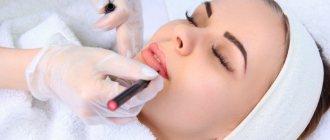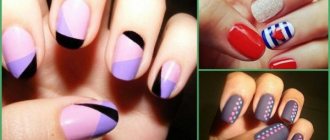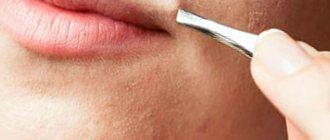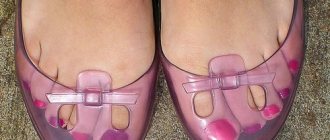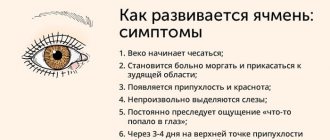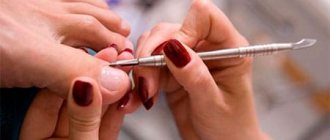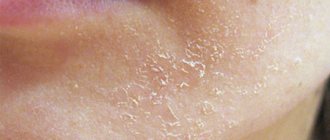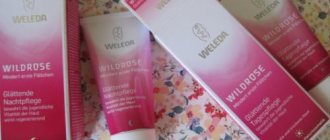Exposure to heat
The procedure appeared in the eighties and has only been gaining popularity since then.
The use of paraffin in cosmetology is not limited to skin rejuvenation; it is also used in the treatment of joints and relieves muscle tone. Paraffin therapy is a type of heat treatment that has two very beneficial effects:
- firstly, pain relief occurs in diseases of the joints and muscles, orthopedic problems;
- secondly, the use of paraffin has a beneficial effect on the condition of the skin - it softens and becomes silky.
The therapy is applicable to any skin surface, but the most popular treatments are for the face, hands, feet and areas of the knees and elbows.
Paraffin therapy for hands in the salon
There are several varieties of this procedure in salon conditions.
What do you need for paraffin therapy on your hands at home? In fact, doing this procedure yourself is much more profitable. You can immediately buy a ready-made kit in the online store, which includes everything you need:
- Bath;
- Desk lamp;
- Warm mittens;
- Cosmetic paraffin;
- Essential oil (one or more).
The cost of such a set is on average up to 3000 - 5000 rubles, the most expensive purchase is the bath. We advise you to immediately purchase a good device that has a heater, timer and thermostat. The latter is very convenient to use to control the melting temperature of paraffin. Let us immediately make a reservation that such a bath is not suitable for preparing wax - for the purpose of depilation it is better to purchase a wax melter.
Which paraffin is best for hand paraffin therapy? Cosmetologists advise paying attention to the products of the aravia professional brand. Arabia paraffin contains the necessary multivitamin composition and is rich in healthy oils, plus it has a reasonable price.
In addition to the above products, you will need paraffin cream (it is good to buy Tanoya or Kapous cream, which are classified as professional products) or a hand mask, hand scrub. Instead of mittens, many sets include electric mittens. Don’t skimp on tools for home paraffin therapy – it will pay off in spades, because your goal is beautiful and well-groomed hands.
There is a lot of information on the Internet with detailed descriptions, master classes and video tutorials on how to do paraffin therapy for hands. But we will still focus on step-by-step instructions for this procedure.
Stages of paraffin therapy for hands at home:
- We prepare paraffin - heat it in our bath to the desired temperature;
- We treat our hands - be sure to apply a scrub to the skin;
- We apply a paraffin mask - apply cold paraffin like a cream, hot paraffin with a brush, wrap your hands in film and hide them in mittens;
- Apply the cream - carefully remove the paraffin with a damp cloth and moisturize with the cream.
As we can see, the technique of paraffin therapy at home differs little from the salon procedure. But at the same time, by doing several courses, you will significantly save your budget, as if you had to have this procedure done by a cosmetologist. In addition, paraffin therapy for your hands will be available to you at any time of the day convenient for you. The effect is visible immediately - the skin tightens and becomes velvety.
Cosmetic paraffin is a high-quality white substance that is not capable of causing allergic reactions and skin irritation, since it does not contain any impurities, as well as dyes and flavors. Due to its unique properties, it is mainly used to cleanse, moisturize and nourish the skin.
What is paraffin therapy? This is a method of applying a substance to the skin of the face, décolleté and hands using a special brush. The paraffin is first melted in a water bath to prevent it from overheating and igniting, which can be dangerous. It is used in its pure form or other components are added to it, using it as masks.
Warm cosmetic paraffin tightly covers the skin, increasing its temperature by 1-2°C. A favorable environment helps open pores and clean them. In this case, there is an active release of moisture, but it does not evaporate, but effectively moisturizes the epidermis. This ensures the preservation and restoration of the skin's water balance.
Paraffin procedures carried out with the addition of essential oils, aloe juice and other components help soften the epidermis, improve blood microcirculation in the area of application and help the penetration of nutrients deep into the skin.
The benefits of paraffin therapy are most visible in the cold season, when under the influence of piercing winds and frosts the skin becomes dry, tight, irritated, and chapped.
However, there are certain contraindications to this procedure. First of all, these are blood vessels located close to the surface of the epidermis, increased vegetation, the presence of warts and moles, and infectious skin diseases at the site of application. In addition, cosmetic paraffin cannot be used for diseases of the cardiovascular system - hypertension - and poor blood clotting. The link tells you how to do paraffin therapy for your hands at home.
How to use paraffin correctly? There is also cold paraffin therapy for hands, which has a low melting point of the substance. The consistency of this substance is creamy. It is easy to apply to the skin and distribute using massage movements. The peculiarity of the effect is the ability to retain body heat. At the same time, the substance contains a high level of active components that moisturize and nourish the epidermis.
Advantages of the “cold” method:
- Saves time, since the cosmetic substance does not need to be heated before starting the procedure.
- No additional equipment is required, so you don’t have to spend money on buying a heating bath.
- The procedure is much more hygienic, because each client is assigned his own portion of the cream. In addition, since in this case there is no need for a bath for paraffin therapy, the risk of catching any infections is automatically reduced (you do not have to dip your palms into a common container).
- Suitable for people suffering from arterial hypertension and varicose veins.
- It has a cooling effect, which is especially important during the hot season.
Cold paraffin for hands is considered more common for cosmetic procedures at home.
The cold cosmetic procedure is performed in 4 stages. First, your palms must be washed and dried thoroughly. If necessary, you can further process the cuticle and shape the edges of the nail plates. After cleansing, apply a scrub and massage the skin. At the second stage, you need to apply a cream, thanks to which the effect of the procedure will be much better.
The use of cold paraffin therapy allows the epidermis to remain moisturized and velvety for a long time. In addition, such paraffin is much safer than hot paraffin. The procedure is allowed 1-2 times every 7 days.
Paraffin hand masks are an excellent opportunity to restore your hand skin to its former beauty and elasticity. We also recommend that you familiarize yourself with paraffin therapy for the face in this material.
Several ways to melt paraffin
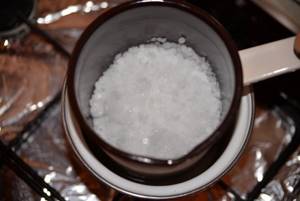
View gallery
It is worth understanding that paraffin left over from burnt candles is not suitable for cosmetic procedures. For this purpose, special cosmetic paraffin is used. It can be purchased at pharmacies or specialty stores. Do you know how to melt paraffin? The easiest way is a water bath. To do this, you will need two metal containers of different diameters, water for heating and a thermometer. Stages:
- Pour about a third of water into a larger diameter container and boil it on the stove.
- Chop the paraffin into small pieces. It is most convenient to do this on newspaper or large format paper. When cutting, the paraffin will crumble. To do everything carefully and not lose the valuable substance, the litter will come in handy.
- Place the finely chopped paraffin in a container of smaller diameter and shake off the crumbs from the newspaper there.
- After the water boils, measure its temperature with a thermometer; it should show no more than 55 - 80 °C. At higher temperatures, the paraffin will begin to evaporate.
- Reduce the gas and place a smaller container on top of the boiling water so that its bottom touches the water.
- Stir the paraffin with a metal spoon until it completely melts.
- When melting, the volume of the substance in the container will decrease. If it is not enough, you can add a few more pieces to the already melted paraffin.
Make sure the container is completely dry before melting the paraffin. Water ingress into liquid paraffin is strictly prohibited. When it comes into contact with water, the hot mass will shoot and splash, and contact with the skin may cause a burn.
Benefits and Benefits
Paraffin treatments smooth and soften dry, cracked and rough skin. Therefore, they can be successfully used to treat chronic skin diseases such as eczema and psoriasis.
Paraffin treatment soothes even chronic joint pain and relaxes tense muscles, and also improves blood flow to the treated surface. Treatment is useful for maintaining mobility in arthritis or bursitis.
Main advantages:
- removal of dead skin cells;
- softening rough and dry skin of hands, elbows and feet;
- relieving mild attacks of joint pain;
- relaxation of muscle tension;
- warming up method when engaging in therapeutic sports;
- restorative care with frequent contact with water and detergents;
- a face mask that gives a fresh look and delicate tone to the skin;
- Relieving swelling and smoothing out fine wrinkles on the face;
- relieving swelling in the legs.
The effect of paraffin therapy
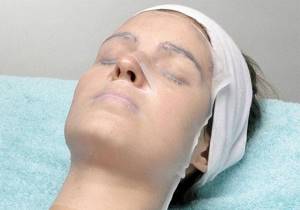
Paraffin therapy is used mainly for hands during a special manicure. However, the procedure is also used for the skin of the face, legs and other areas of the body, for example, paraffin wraps to treat cellulite.
- Skin whitening;
- Rejuvenation and cleansing of the skin;
- Powerful hydration;
- Protection against cracks and dryness;
- Elimination of gravitational ptosis and double chin;
- Correction of facial wrinkles;
- Lymphatic drainage effect.
The described hand baths and face masks have a complex therapeutic effect on the skin and joints. Paraffin therapy is recommended in the presence of peeling and microcracks on the skin, pigmentation, frostbite, arthritis and arthrosis. This procedure also has a targeted restorative effect on the nail plate; if the nails are peeling or often break, paraffin therapy is perfect for restoring their structure.
Exposure to heat
Paraffin therapy is a mini-bath with a thermal effect that causes sweating. Together with sweat, harmful substances leave the skin, tissues are cleansed and metabolic processes are activated. When the paraffin cools, the pure liquid returns to the layers of the skin and moisturizes it, healing all skin systems and improving its condition.
Paraffin therapy has a powerful effect on the epidermis, rejuvenating and correcting blemishes, and also relieves people of many health problems.
If you immerse your hand or foot in a paraffin bath, the heat will be transferred to the affected area. The temperature in the application area will increase by several degrees, from 1 °C to 3 °C. This will increase blood flow due to the expansion of capillaries and will give a resolving anti-inflammatory effect.
Paraffin applications help:
- accelerate regenerative processes;
- reduce pain and stiffness;
- relieve muscle spasms;
- moisturize the skin and open the pores.
When applying paraffin, the temperature in the underlying tissues increases by 1-3ºС. As a result, hyperemia occurs and increased blood flow at the site of paraffin application, metabolic processes improve, resulting in the following therapeutic effects:
- resorption of infiltrates,
- the inflammatory process is reduced,
- damaged tissues are restored,
- regenerative processes are activated,
- blood supply to problem areas improves,
- muscle spasms are relieved,
- the pain subsides,
- metabolic processes in the underlying organs and tissues improve.
As paraffin cools down, its volume decreases by up to 10%, while slightly compressing the skin and acting like a light massage.
The thermal effect occurs due to the slow cooling of the paraffin. The skin pores expand and sweat is released from them along with toxins and various waste products. Moreover, the moisture does not evaporate: it remains under the paraffin, leaving the skin moisturized. Harmful substances released with sweat are not absorbed back into the skin; their molecules are heavier than water, but remain on paraffin, which is then thrown away.
During the cosmetic procedure, microcirculation improves, making the skin moisturized and soft. As paraffin cools, it tightens the skin, making it immobile, and this helps smooth out wrinkles not only on the face, but also on the hands, which is now often observed even in young girls. When performing the procedure on the hands, paraffin helps strengthen the nail plates, protecting them from delamination and giving them strength and a healthy appearance.
Paraffin therapy is an affordable and effective procedure for maintaining beautiful skin. The technique is in demand not only in cosmetology, but also in medicine.
Paraffin applications accelerate regenerative processes, reduce pain and stiffness, and relieve muscle spasms.
Paraffin therapy is a mini-bath with a thermal effect that causes sweating. Together with sweat, harmful substances leave the skin, tissues are cleansed and metabolic processes are activated. When the paraffin cools, the pure liquid returns to the layers of the skin and moisturizes it, healing all skin systems and improving its condition.
Therapy methods
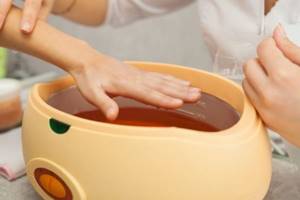
Paraffin therapy has been used for a long time. But in the domestic space it gained popularity only a few years ago. Despite this, specialists have mastered the traditions of their colleagues, which are common both in the Western direction and in Asian countries. The most popular methods for carrying out the procedure for influencing the human body with paraffin are:
- Layering. This technique is carried out by heating paraffin wax to a temperature ranging from 55 to 65 degrees Celsius. After this, the substance will be applied to the corresponding areas of human skin. The thickness of the layer should approximately be within one centimeter. Paraffin should be layered using a special flat paint brush. After the layer of substance has been produced, it is necessary to cover it using a special compress film or wax paper. On top of it, the person’s body should be covered even more with a blanket or a specially selected padded jacket. At the end of the procedure, the temperature of the layer should reach 50 degrees Celsius.
- Paraffin Bath. This technique is used primarily to affect the hands or feet. First, these parts of the human limbs are coated with paraffin, the temperature of which should not exceed 50-55 degrees Celsius. Immediately after this, these areas should be immersed in containers of paraffin in molten form, whose temperature varies from 60 to 65 degrees. In order to enhance the cosmetic and therapeutic effect, mittens that can maintain temperature are then put on the hands, and special boots are put on the feet.
- Napkin-application procedure . The essence of this procedure is that first, paraffin about 0.5 centimeters thick must be applied to areas of the skin using the layering method. After this, you need to put gauze napkins on this layer. Initially, they need to be soaked in molten paraffin, whose temperature reaches 70 degrees. Immediately after this, they need to be squeezed out a little and folded up to a dozen times. This layer on top must also be covered with a special film, on which you need to place a blanket that maintains the temperature inside.
- Cuvette-application procedure . To carry out the paraffin therapy procedure using this method, the molten medicinal substance must first be poured into special flat vessels up to 5 centimeters deep - cuvettes. They must initially be lined with prepared medical film. It must be released beyond their edges by 5 centimeters. The thickness of the paraffin itself in each of the cuvettes should not be less than two or three centimeters. When the substance cools to 50 degrees, while still quite soft, it must be removed from the vessels along with the film and placed on the human skin. After this, the paraffin must be covered with temperature-retaining things - a blanket or a padded pad.
- Spraying. To carry out this procedure, you need a special tool - a spray bottle. In some cases, you can use special applications through plastic foil. If it is necessary to treat non-healing wounds in this way, as well as any other skin damage, instead of paraffin, use a mixture of it and cottonseed oil. In this case, the ratio of the first ingredient to the second should be one to three.
- Tampons. In some cases, for diseases of the female genital organs or anal area, special tampons made of paraffin can be used.
In addition to the above, there are many different methods for using paraffin. Very often, for cosmetic purposes, this material is combined with various creams, foams, muds, etc.
Paraffin therapy for feet in the salon
This spa procedure is also possible for feet. What paraffin therapy gives to your feet: firstly, instant smoothness, and secondly, getting rid of cracked heels. Along with paraffin therapy of the feet, pedicures are often performed with or without shellac.
Paraffin therapy in the salon looks step by step as follows:
- The skin of the feet is cleaned and the cuticles of the nails are treated;
- Nourishing oil is applied to the nails;
- The feet are treated with a scrub, applying it with light massage movements;
- A moisturizing composition is applied to the skin of the feet;
- The legs are dipped in liquid hot paraffin several times, after which they are wrapped in film and a towel for 25 minutes;
- The paraffin is removed and a protective cream is applied to the skin of the feet.
Experts assure that regular paraffin therapy of the feet will relieve endless problems with them. In particular, cracks on the legs and peeling will gradually disappear, the skin will become very soft and take on a healthy appearance.
If you have not previously resorted to this spa service, then it is better to entrust the first session to a professional. Then you can keep your feet looking well-groomed at home.
The cost of a salon procedure will cost you approximately 400 – 1000 rubles.
First you need to purchase everything you need. What is needed for paraffin therapy of feet at home:
- Bath, gezatone ww350 is best suited for these purposes, don’t skimp on it;
- Paraffin - you can buy it through an online store or at a pharmacy;
- Plastic bags or film - regular food film will do;
- Towel;
- Peeling and nourishing cream.
The requirements for a foot bath are the same as for a hand bath - thermostat, heating speed, ease of use. For paraffin therapy of the feet, it is better to choose a larger volume bath.
The very first and most important thing is to heat the paraffin to a temperature of 40-50 degrees. If you don’t have a bath, you can do this in a water bath. In the latter case, carefully ensure that no water gets into the paraffin. Further:
- We clean the skin of the feet first with soap, then with a scrub, wipe it dry;
- We apply paraffin to the skin in several layers, the first of which is thin;
- We dip our feet into the bath several times until the paraffin layer reaches a thickness of 2 cm;
- Wrap your feet in cling film and cover with a warm towel;
- To enhance the effect, you can wear terry socks instead of a towel;
- We wait 20 minutes and wash off the paraffin with warm water, lubricate the skin with cream.
How often should I do paraffin therapy on my feet at home? It’s best once a week for a month and a half. You will experience maximum benefits from this procedure, and your legs will only become more beautiful. A greater effect before and after will be noticeable if you do everything according to the instructions.
Hand paraffin therapy: gives a good effect at home and in the salon, makes your hands soft and well-groomed.
This procedure has some contraindications, namely:
- Tendency to varicose veins;
- Allergic rashes and inflammations on the skin;
- Cardiovascular diseases;
- Uncontrolled muscle contractions (spasticity);
- Insulin dependence, diabetes mellitus.
It is for these reasons that the first procedure should still be done in the salon, otherwise there is a risk of health complications. However, in most cases, paraffin therapy for the feet does not cause significant harm.
Preparation for the procedure
To carry out manipulations at home, it is necessary to prepare in advance an impressive list of auxiliary things. It is represented by the following positions:
- Paraffin (cold or hot).
- Steam bath heater or accessories (for hot use only).
- Cellophane gloves, thermal gloves (or mittens made of dense, warm material).
- Brush (required for using hot paraffin).
- Scrub (used to pre-clean the skin).
- Moisturizing cream (for the final stage).
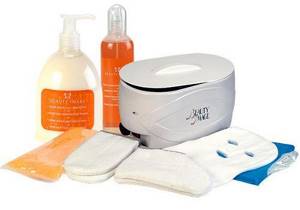
Who is it useful for?
Indications for the use of paraffin therapy are extensive. Paraffin therapy is recommended for people suffering from orthopedic diseases, arthritis, and salt deposits. The procedure helps remove toxins and makes the skin easier to “breathe.” By reducing its volume as it cools, paraffin helps stretch the skin and smooth out wrinkles.
Main indications for use:
- dry skin and related diseases (psoriasis, neurodermatitis and others);
- pigmentation;
- expression wrinkles;
- loose skin;
- scars, scars and cracks;
- joint diseases (arthritis, arthrosis);
- orthopedic pathologies;
- bronchial diseases;
- osteochondrosis;
- fractures.
Indications for the use of paraffin therapy are extensive. Paraffin therapy is recommended for people suffering from orthopedic diseases, arthritis, and salt deposits. The procedure helps remove toxins and makes the skin easier to “breathe.” By reducing its volume as it cools, paraffin helps stretch the skin and smooth out wrinkles.
In a beauty salon
Spa centers, beauty clinics, various salons and medical centers offer similar treatments. They can be performed separately or as part of massage therapy, manicure or pedicure, or facial skin care.
The advantages of hand paraffin therapy in a salon include a comfortable environment, as well as receiving high-quality professional care along with pleasant sensations. The salon allows a woman to relax and enjoy moments of pleasure and relaxation.
Paraffin therapy is often offered as a means of rehabilitation for sports or other physical injuries. Treatment with paraffin to solve skin problems is prescribed in courses. Usually 10 to 20 procedures are required. They are carried out daily or every other day. If necessary, the course of treatment is repeated after 30-60 days.
Salon paraffin therapy techniques:
- applying mass in layers;
- baths for complete immersion of arms or legs;
- applications from napkins with hot composition;
- application using a cuvette;
- paraffin therapy with the addition of fish oil and cottonseed oil.
Contraindications for cosmetic paraffin therapy procedures
Often, paraffin therapy may be prescribed by a doctor for a number of reasons.
In some cases, a dermatologist, seeing certain skin problems, may prescribe paraffin therapy for medicinal purposes. This is done when the patient:
- Has very dry and dehydrated skin;
- Prone to swelling;
- Suffering from cracks in both arms and legs;
- Complains of wrinkles on her hands;
- Experiencing problems with joints;
- Suffers from respiratory diseases;
- Has orthopedic deviations.
What is useful about paraffin therapy is that it helps to minimize the manifestations of many diseases, provided that the course of treatment is followed. To consolidate the result, after 1.5-2 months the course of paraffin therapy can be repeated again.
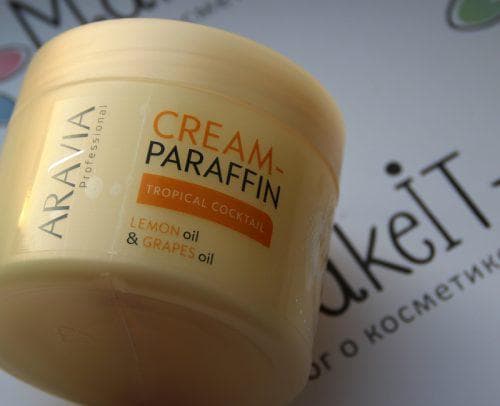
Despite the obvious positive properties of this spa treatment, it does have some disadvantages, evident in the side effects.
They are only possible if the procedure is not followed. In particular, if paraffin overheats, a person can get burned, which is why it is so important to observe the temperature regime when heating.
In rare cases, paraffin therapy causes skin allergies. If you notice red spots on the skin, you should stop the course immediately.
Otherwise, paraffin therapy for hands and feet is very useful and necessary. Both men and women can resort to it.
There are contraindications that should be familiarized with before starting treatment: diabetes mellitus, varicose veins in the area where application is planned, vascular atherosclerosis, deep wounds and ulcers, arterial hypertension and others.
What are the contraindications? A paraffin hand bath is considered not only a cosmetic, but also a therapeutic procedure, so there are some contraindications to its use. A prohibition for paraffin therapy is the presence of various infectious-inflammatory and pustular diseases that are localized in the hand area.
In addition, if a person has fresh scratches, cuts or other damage to the skin, then such a procedure cannot be carried out either. The use of cosmetic paraffin is prohibited in case of diabetes, hypertension, or vascular diseases. The reason for prohibiting such a procedure may be malignant and benign tumors (regardless of their location).
Before coming for paraffin therapy, you should consult a cosmetologist. In addition, we must remember that after this procedure you should not go out into the cold for 2-3 hours, since sudden temperature changes can negatively affect the skin of your hands. You can find out about paraffin therapy for feet by following the link.
But not everyone can benefit from paraffin baths and applications. Significant harm to health is possible if there is a history of:
- acute inflammatory diseases or exacerbation of chronic diseases;
- coronary heart disease, exertional angina, severe atherosclerosis,
- chronic glamerulonephritis, liver cirrhosis, diabetes mellitus, high blood pressure;
- the presence of a large number of papillomas, moles and warts in the treated area;
- poor blood clotting;
- pregnancy and breastfeeding.
It is strictly forbidden to carry out such a procedure if there are any open wounds, ulcers, ulcers, eczema or weeping dermatitis on the skin.
Indications for use of the technique
Indications for paraffin therapy are divided into cosmetic and medical. Medical indications include the following diseases:
- Dysfunctions of the musculoskeletal system (arthritis, radiculitis, fractures, sprains and ligament tears);
- Skin diseases;
- Varicose veins;
- Trophic ulcers;
- Frostbite and burns;
- Gynecological diseases in women;
- Severe diseases of internal organs;
- Polio.
Cosmetic procedures are performed for the following problems:
- Severe dry skin;
- Tendency to swelling;
- Age-related changes (ptosis of the oval face, double chin);
- Premature aging;
- Expression wrinkles;
- Deep creases and folds;
- Aging of the hands;
- Cellulite;
- Cicatricial changes in the skin.
The use of paraffin is justified only in cases where irreversible anatomical changes in the affected organs or tissues have not yet occurred in the body. The greatest effect will be noticeable if paraffin therapy is one of the components of complex treatment for subacute processes or in the initial period of the chronic course of the disease. The therapeutic effect will be effective when
- injuries and diseases of an inflammatory or degenerative nature of the musculoskeletal system (fractures, dislocations, sprains, ligament and muscle ruptures, arthritis, arthrosis, osteochondrosis),
- diseases of the peripheral nervous system (radiculitis, neuralgia, neuritis),
- chronic respiratory diseases (bronchitis, pneumonia, tracheitis, etc.), liver diseases (hepatitis), peptic ulcers,
- hypertension,
- chronic diseases of the female genital area,
- varicose veins;
- adhesive disease,
- skin diseases, trophic ulcers, burns, frostbite, wounds.
No less popular is the use of paraffin in beauty salons for cleansing and rejuvenating the skin of the face, hands and feet. Here, paraffins are used with various additives and flavors, for example, honey, vitamins, essential oils, anti-inflammatory and moisturizing components.
Paraffin baths and masks will help if you want to hide age-related skin changes, remove wrinkles on the face and hands, and get rid of a double chin.
The advantages of the cosmetic effect during cosmetic procedures include getting rid of excess weight and cellulite, and will help minimize scarring on the skin.
Paraffin therapy at home for the treatment of joints: recommendations, application options
Paraffin, the use of which is considered very effective for joints, has high heat capacity and low thermal conductivity. Paraffin is a petroleum derivative, a waxy mixture of hydrocarbons. The substance heats up and melts quickly, slowly releasing heat.
Melting point - 55 degrees. Due to this property, after application to the skin, paraffin helps to increase the temperature by several degrees in the treated area.
It is impossible to get a burn from the thermal effects of paraffin, but the results after thermal procedures are noticeable.
The therapeutic effect of paraffin for human joints is explained by its high heat capacity, but with a low thermal conductivity.
Thus, paraffin begins to melt at 52 degrees Celsius. Due to its low thermal conductivity, paraffin applied to the skin leads to an increase in the temperature of the treated area by only two degrees Celsius.
- As a result, it is impossible to get a burn when using paraffin-based thermal therapy as a treatment, but a positive result due to long-term heat retention is achieved quickly.
- The healing properties of paraffin include:
- The product leads to rapid softening of the upper layer of the epidermis, which significantly increases the result of the procedure.
- An increase in intercellular space and expansion of pores contribute to the rapid penetration of heat. If paraffin is applied to an inflamed area, this property helps eliminate excess moisture due to increased sweating.
- By expanding the pores, accumulated toxins and harmful substances are removed from the body.
- Paraffin, by heating the skin, leads to increased blood circulation, which significantly reduces inflammation.
- Paraffin masks moisturize the skin and make it more elastic.
The product described is very popular in cosmetology. With its help, women fight the first wrinkles and also try to get rid of cellulite. But paraffin has a more effective effect on joints.
Paraffin has healing properties:
- In a short period of time it helps to soften the top layer of skin, increasing the therapeutic effect.
- The use of paraffin allows you to increase the volume of intercellular space, which causes the pores to expand and activates the penetration of heat into the skin structures. When applying paraffin to inflamed areas, the specific property of the substance helps eliminate excess moisture due to increased sweat production.
- The expansion of pores helps to remove toxic substances, toxins and other harmful elements from the body.
- Warming the skin with paraffin increases blood circulation and helps reduce the intensity of the inflammatory process.
- Paraffin-based masks moisturize the skin, restoring its elasticity and youth.
Paraffin is considered a universal means for application. Paraffin therapy can be used on any part of the body: arms, legs, face, stomach and thighs. Thanks to these properties, paraffin is used both in cosmetology and in medical practice, helping to eliminate wrinkles, corns and calluses, and treat joints. It is also successfully used in the fight against cellulite.
The use of paraffin for the treatment of joints is due to its good thermal conductivity and viscosity. When applied to the skin, the substance retains heat for up to 1 hour, cooling gradually and slowly. Apply paraffin in layers, taking into account that the next layer is hotter than the previous one. In this case, the joint and soft tissues are warmed up.
Paraffin also acts mechanically. When cooling, the substance compresses the surface layers. Thus, during the cooling process, small vessels narrow, slowing down blood flow, which causes maximum heating of the affected joint tissues. Due to such heating, joint function improves, damaged tissue is restored, and wound regeneration is activated.
The double effect allows you to use paraffin for various joint diseases, carrying out treatment at home. Before using paraffin for treatment, you should consult your doctor, as there are restrictions and special instructions for the use of this substance.
Paraffin should only be heated in a water bath or in a special bath. To melt paraffin in a water bath, place a pan of water on low heat and place a small container with paraffin in it. At a temperature of 60 degrees the substance begins to melt.
Paraffin is applied to the joint in three ways. The skin must first be brought to the required condition; it must be dry, without injuries or cuts. If hair is observed on the skin, it must be shaved. The temperature of the applied paraffin layer should be such as not to cause burns.
- A paraffin cake is applied to the sore joint and covered with a warm cloth for an hour.
The heated substance (up to 60 degrees) is applied with a brush in layers, so that the next layer is hotter than the previous one by 2 degrees. Wax paper is placed on top and wrapped.
- To treat joints of the hands and feet, the limbs are treated and then dipped into a container with paraffin heated to 60 degrees. The procedure can last up to 30 minutes, or you can lower and remove the limbs into the paraffin mass 10 times, then wrap the hand or foot in a plastic bag and wrap it with a shawl on top.
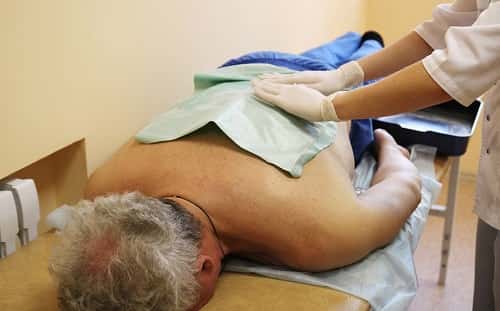
When performing procedures using paraffin, you need to adhere to some recommendations:
- Limbs should be immersed in a bath of dissolved paraffin gradually; after removal, the substance should be allowed to dry for a few seconds;
- For aroma, you can add essential oil to the paraffin solution;
- Before dipping the limb into the prepared solution, it is recommended to add a few drops of mineral and essential oils. The combination of these elements increases the effectiveness of the procedure, since beneficial oil particles begin to enter the body through open pores, activating the process of therapeutic therapy.
- It is strictly forbidden to treat with paraffin if you have hypertension, varicose veins or diabetes.
Paraffin therapy is a thermal treatment method using molten paraffin in the form of applications, layering or baths. The name of this term comes from Lat. par “little”, affinis - “related, participating” and therapeia - “treatment”. Treatments with paraffin are carried out for the skin of the face, neck, scalp, and body.
Paraffin is a mixture of saturated acyclic hydrocarbons, a product of petroleum refining. It has a crystalline structure, tasteless and odorless. Insoluble in water, alcohol, soluble in most organic solvents. Liquid paraffin easily mixes with fats and is used in many cosmetic products as a thickening component.
The benefits of paraffin therapy are due to the therapeutic effect of thermal and mechanical factors.
A special feature of paraffin is its ability to decrease in volume by about 10% when cooling, become elastic and have some squeezing (compressive) effect on the underlying tissue.
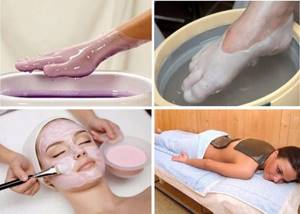
This promotes the spread of heat in the tissues to a greater depth, reducing the lumen of peripheral vessels and accelerating blood flow in them.
Procedures with cosmetic paraffin promote the expansion of capillaries and cause redness of the skin. In this regard, local metabolism in organs and tissues increases, metabolic processes in the body are activated, which accelerates the elimination of toxins. All this determines the anti-inflammatory and stimulating effects of paraffin in chronic diseases of various organs.
Typically, paraffin is part of complex therapy, but in some cases it can be an independent treatment method. Paraffin therapy is used quite widely in non-resort settings.
Effect on joints
Paraffin wax should be used correctly to avoid burns or any other damage.
The rules for using wax include the following aspects:
- Heat the paraffin in a water bath. There is slight disagreement regarding the heating temperature. Some argue that it is necessary to reach a temperature at which the substance completely melts and turns into a viscous mass.
- Cooled paraffin (to about 60 degrees Celsius) is applied to the affected area. In other sources you can find a mandatory condition in the form of heating the paraffin to only 51 degrees. It all depends on the method of application. Follow the instructions for the chosen treatment method.
- Treatment of joints with paraffin cannot be the only one.
- Paraffin should not be used when diagnosing hypertension, varicose veins or diabetes. Also, do not apply the product to the skin if you have ulcers, wounds, acne or other rashes.
Only the correct use of wax can help cope with the disease.
Recipes with paraffin
Wax and paraffin have unique abilities. These substances are characterized by high heat capacity and low thermal conductivity, which provides a long-term heating effect on the treated joint.
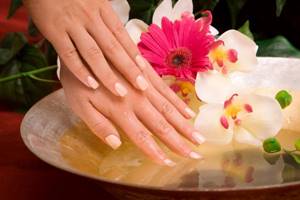
Wax for joints is valuable because it retains heat at the site of application, while the moisture formed inside does not evaporate, but again enters the epidermis, actively moisturizing and nourishing the surface layers of the skin.
Treatment of joints with paraffin at home provides the following effects:
- Warming up. Raises the local temperature by several degrees. Softens the upper layer of the epidermis, which facilitates the penetration of active substances deep into the skin.
- Expansion of pores and intercellular space, as a result of which excess moisture leaves and tissue swelling subsides.
- Removing toxins and other harmful substances. This promotes skin rejuvenation.
- Activates blood circulation, improves metabolic processes. Thanks to this, an anti-inflammatory effect is achieved.
- Relieves pain, restores joint mobility, and removes stiffness of movement.
There are several ways to treat joint diseases using paraffin:
- To treat joints of the hands or feet, melt the paraffin until liquid. Dip your hands or feet into it, remove it from the composition and wait for the formation of a protective layer - the paraffin hardens. Place the treated limbs in a plastic bag. Cover them with a wool blanket or wrap a scarf. The treatment session will take 15-20 minutes. As necessary and depending on the disease, the course may include from 3 to 30 procedures.
- To treat osteochondrosis and other joint diseases, you can prepare a kind of cake from melted paraffin (after some hardening of the melted composition). The made plate is placed on the affected joint, wrapped in film and a woolen scarf. The compress is also kept on the affected area for no more than 20 minutes.
- Paraffin can be applied to inflamed areas using a suitable brush. The substance is melted until a liquid consistency is achieved and applied to the affected area with a brush in several layers. You should not wait for the product to harden. The treated area is wrapped with film and a scarf. This compress can be left on the skin for an hour.
How to make decorative candles with your own hands
What you need
Candle material.
Wax, paraffin or stearin. For people new to candle making, it is best to start with paraffin wax as it is easier to work with. Paraffin can be purchased or obtained from white household candles or their remains.
Stearine can be easily obtained from laundry soap. Grate the soap on a coarse grater or slice it with a knife. Place the shavings in a metal container, fill with water until the liquid covers them and send to melt in a water bath. When the soap has dissolved, remove it from the heat and add the vinegar. A thick mass will float to the surface, which needs to be collected with a spoon after cooling. This mass is stearin; it must be rinsed several times under water and wrapped in a clean cloth to remove excess moisture.
Wick
. For the wick you will need a thick cotton thread, for example, braided or twisted floss. Synthetic materials for candles are unsuitable because they burn quickly and smell unpleasant. It's easier to get a wick from regular candles.
Form
. You can use different containers as a mold for making candles: coffee jars, durable packaging, sand molds and plastic balls. If you decide to make a narrowed or round candle, the container you will use for this, for example, a plastic ball, should be cut lengthwise and a hole with a diameter of at least 1 cm should be made at the top so that the composition can be freely poured into it.
Dyes
. You can use dry food coloring, wax crayons, or natural ingredients, such as cocoa. But alcohol- or water-based paints are not suitable for making candles.
Melting utensils
. A small saucepan or bowl that can be conveniently placed in a steam bath will do.
Additional materials
. You will need them to decorate and add fragrance to the product. Since DIY candles provide a lot of room for imagination, you can use whatever you like, for example, coffee, dried flowers, shells, beads and sparkles. You can scent the candles with your favorite essential oils, vanilla or cinnamon.
Progress
- Grind the selected raw material and place it in a water bath. If you are using household candles, be sure to remove the wick. Remains of candles must be cleaned of black soot. While stirring, wait until the mass melts. Dip the wick into it several times until it is saturated and set it aside.
- Add flavoring and coloring to the mixture. If you use wax crayons, you need to grind them using a fine grater. By using two or more colors you can achieve a marbled look. And by dividing the mass into several parts and painting them in different colors, you can make a multi-colored candle.
- Grease the mold chosen for the candle with vegetable oil or dishwashing detergent. Attach the tip of the wick to a stick, toothpick or pencil and place it on the mold so that the free end of the wick passes through its middle and reaches the bottom. For reliability, you can attach a weight, such as a nut, to the free part of the wick.
- Fill the mold with the melted mass, wait until it hardens completely, then remove the candle by pulling the wick. If the candle is difficult to remove, immerse the mold in hot water.
- You can decorate candles in different ways, for example, place dried flowers, blades of grass and seeds around the edges of the mold and then pour in the melted mass. To make a coffee candle, you need to pour a layer of coffee beans on the bottom of the mold, fill them with liquid candle material and put the beans on top again. Decorating the product with beads, rhinestones and shells is best done after it has hardened and been removed from the mold. Decorative elements are inserted into the melted surface of the candle or attached with glue.
This post-instruction is for those who prefer really nice-smelling candles to the chemicals that are sold in our stores. Of course, there are manufacturers who add truly natural oils to their products, but these candles are very expensive. So if you have a desire to tinker a little and try your hand at making candles, have patience and, of course, free time, this post is just for you.
